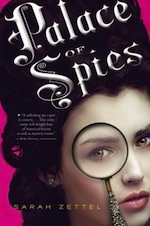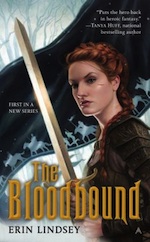Every time I set out to write one of these book round-up posts, I feel simultaneously as though I should have read more books faster, and that I’m talking too much about too many books. Since I can’t resolve this mental contradiction, let’s just roll right on into the literature of the moment…
Although this time I’m going to diverge from talking about SFF novels not just once, but twice: there’s a lovely historical YA and a delightful piece of historical nonfiction that I think are perfectly relevant to our interests around here.
That piece of historical nonfiction is Mary Beard’s Laughter in Ancient Rome: On Joking, Tickling, and Cracking Up (University of California Press, 2014), a thorough—and thoroughly interesting—study of Roman laughter. Beard has been a polarising figure in the media, if not in her scholarship—unjustly insulted, harassed, and threatened by some, admired, even hero-worshipped by others—but there’s no denying her ability to write engaging and widely readable books. Laughter in Ancient Rome isn’t just a study for the specialist, but a survey for any generally interested reader: Roman humour has points of great difference, and points of startling similarity, to our own, and Beard’s writing illuminates a curious world indeed. It is even possible, in fact, that ancient Romans did not smile, or understand smiling, as we do—making laughter in ancient Rome a stranger and more fantastical matter than the worldbuilding in many of our fantasy novels.
Sarah Zettel’s Palace of Spies is a Young Adult novel set in the court of George I, the first Hanoverian king of England. Peggy, an orphan of good family, is manipulated into taking the place of one of the ladies in waiting to Caroline Princess of Wales, where she quickly finds herself in the middle of politics and intrigues involving Stuart supporters and Hanoverian loyalists. The young lady she replaced is dead. Was it murder? Will Peggy live long enough to be exposed as a fraud? Who are the people she’s working for, really? It’s a fast-paced and compelling story, and the sequel’s already available in hardback.
The Bloodbound by Erin Lindsey isn’t fast-paced. It’s a fantasy novel in a self-consciously traditional mould: while it doesn’t draw directly from any particular well, there is much in its tone and concerns that reminds me of early Mercedes Lackey or Tamora Pierce, albeit less didactic than either. It’s competent and entertaining, with a handful of interesting characters, but it’s not doing anything particularly special.
On the other hand, Lia Silver’s Laura’s Wolf, a standalone novel, and Prisoner, the first book in a projected trilogy, are doing something pretty special. Silver is a pseudonym for writer Rachel Manija Brown, whose Young Adult collaboration with Sherwood Smith, Stranger, is out from Viking this November. Laura’s Wolf and Prisoner are urban fantasy romances—with werewolves, naturally, but not with any of the other supernatural beings common to the genre—whose major focus is on relationships between individuals suffering from post-traumatic stress of some kind or other. While the wolfiness of the werewolves is the weakest part of the books, the closely-observed and immensely sympathetic portrayal of post-traumatic stress is their strongest aspect—that, and Silver’s grasp of how to tell a fast-paced, compelling story with interesting characters. There’s more than a bit of action-adventure in among the romance: I recommend them as more than worth one’s time.
Also worth one’s time, for those who like a good tragic adventure story, is Liane Merciel’s Dragon Age: Last Flight. While diehard fans of the franchise might find something to quibble with in canon contradictions, this novel is much better written, and much better put together, than any of the previous tie-ins: it forms a unity in its own right, and a narrative that doesn’t rely much if at all on prior knowledge of the world of Dragon Age, while successfully managing to avoid the worst flaws of RPG tie-in novels. (Which is to say, it doesn’t read like a write-up of a roleplaying campaign.) A young mage staying at the Grey Wardens’ headquarters of Weisshaupt discovers a diary from four hundred years before—the height of the Fourth Blight—and uncovers a secret hidden even from the Wardens themselves. There are two main characters: Valya, the mage who discovers the diary; and Isseya, the mage who hid it, and from whose perspective we see the events of the Fourth Blight unfold. It’s a solid story with compelling characters, plenty of desperate last stands, and a fair amount of hack-and-slash. Lots of fun.
Liz Bourke is a cranky person who reads books. Her blog. Her Twitter.















